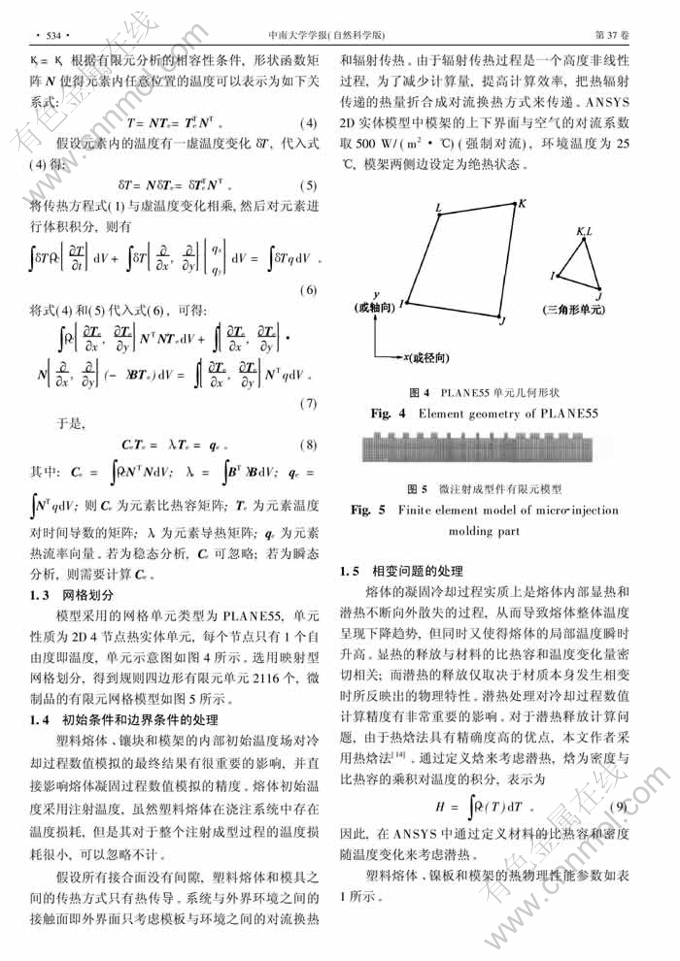考虑结晶潜热的LDPE微结构件注射成型模内温度场
来源期刊:中南大学学报(自然科学版)2006年第3期
论文作者:蒋炳炎 翁灿 罗建华 杜雪
文章页码:532 - 536
关键词:微注射成型;低密度聚乙烯;结晶潜热
Key words:micro-injection molding; low density polyethylene; latent heat
摘 要:采用含有热源的各向同性物体的热传导处理方法,以及用热焓法处理相变中的结晶潜热问题,建立微注射成型冷却阶段传热过程的数学模型。对结晶型材料低密度聚乙烯(LDPE),在熔体初始温度分别为165, 175和185℃,模温分别为35和55℃时应用有限元软件ANSYS的热分析模块进行仿真分析。研究结果表明:当模温相同而熔体初始温度不同时,熔体温度从熔点温度100℃降到60℃的冷却时间几乎相同;当熔体初始温度相同而模温不同时,模温为35℃时的冷却时间明显比模温为55℃时的少很多。模具温度对成型过程的影响较大,熔体温度的影响相对较小。采用考虑结晶潜热的微结构件注射成型有限元模型能较准确地预测制品内部温度场分布。
Abstract: The mathematic model of heat transfer was established by adopting heat conduction method of isotropic materials containing inner heat source in cooling stage of micro-injection molding with latent heat derived from phase change during crystallization. The finite element software ANSYS was employed in the analysis of simulation for low density polyethylene (LDPE) under the following conditions: the melt temperatures were initialized as 165, 175 and 185℃respectively, and the mold temperaturs were 35 and 55℃respectively. The simulation results show that when the melts with different initial melt injection temperatures and the same mold temperature cool from 100℃to 60℃, the cooling times are almost the same. When the melts in mold with different mold temperatures cool from 100℃to 60℃, the cooling time decreases obviously with the increase of the mold temperature. The mold temperature obviously influences the molding process, while the melt temperature influences comparatively less. The finite model of injection molded parts with microstructure region considering latent heat can approximatively forecast the cavity temperature.
基金信息:国家自然科学基金资助项目




